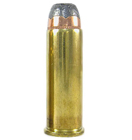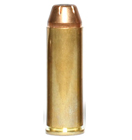.44 Magnum vs .454 Casull - Which one is better?
The .44 Magnum and .454 Casull cartridges are powerful and popular handgun cartridges known for their exceptional stopping power and versatility. Both cartridges have gained a significant following among firearm enthusiasts, hunters, and those seeking reliable self-defense options. Understanding the similarities and differences between these two cartridges is essential for individuals looking to make an informed decision when choosing a handgun for various purposes.
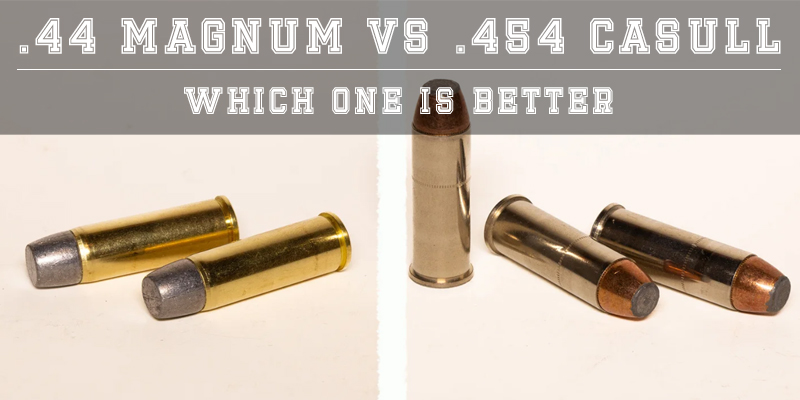
Comparing the .44 Magnum and .454 Casull cartridges is important because they are often considered the top contenders in powerful handgun cartridges. Both cartridges offer substantial energy and stopping power, making them suitable for hunting large game, self-defense in wilderness environments, and even target shooting. By examining their characteristics and performance, individuals can determine which cartridge better aligns with their specific needs, preferences, and intended applications.
The primary objective of this comparison is to provide an in-depth analysis of the .44 Magnum and .454 Casull cartridges. This includes examining their historical background, technical specifications, common uses, and performance characteristics such as muzzle velocity, energy, and bullet weight, as well as discussing the pros and cons of each cartridge. Additionally, this comparison aims to explore various factors, such as recoil, shootability, ammunition availability, cost, and practical applications, to aid individuals in making an informed decision when selecting between the .44 Magnum and .454 Casull cartridges.
44 Magnum vs. 454 Casull : History Overview
The .44 Magnum cartridge was developed by Elmer Keith, a renowned firearms enthusiast, and writer, in the 1950s. It was initially created as a more powerful alternative to the .44 Special cartridge, primarily for handgun hunting and outdoor activities. The introduction of the .44 Magnum chambered in the iconic Smith & Wesson Model 29 revolver gained significant popularity after being featured in movies and media.
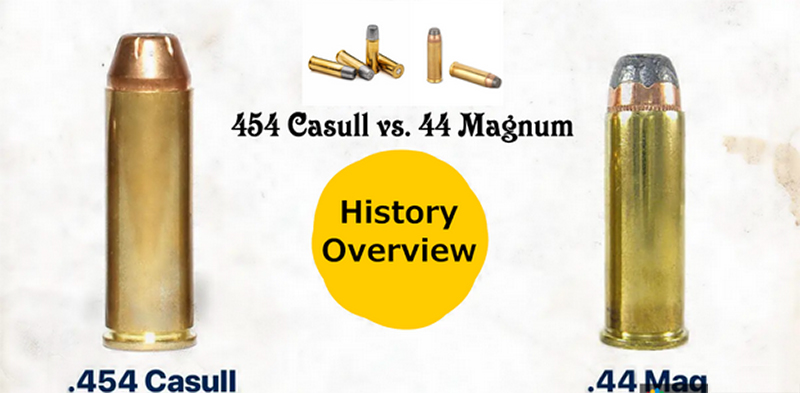
Dick Casull developed the .454 Casull cartridge in the early 1950s. It was designed to be a high-pressure, high-velocity cartridge capable of firing heavy bullets for hunting large and dangerous games. The .454 Casull gained attention for its exceptional power and was eventually chambered in the Freedom Arms Model 83 revolver.
44 Magnum vs. 454 Casull: Specifications
44 Magnum
- Bullet size: The .44 Magnum typically uses a .429" diameter bullet.
- Case dimensions: It has a straight-walled case with a length of 1.285" and a rim diameter of 0.514".
- Overall length: The overall length of a .44 Magnum cartridge varies, but it is generally around 1.61".
- Maximum pressure: The SAAMI sets the maximum average pressure for the .44 Magnum at 36,000 PSI.
| .44 Magnum | .454 Casull | |
| Date Designed | 1954 | 1958 |
| Case type | Rimmed, straight | Rimmed straight |
| Bullet diameter | .429 in (10.9 mm) | .452 in (11.5 mm) |
| Overall length | 1.61 in (41 mm) | 1.77 in (45 mm) |
| Case Capacity | 37.9 gr H2O (2.46 cm3) | 45.5 gr H2O (2.95 cm3) |
| Max Pressure | 36,000 psi (250 MPa) | 65,000 psi (450 MPa) |
454 Casull
- Bullet size: The .454 Casull typically uses a .452" diameter bullet, similar to the .45 Colt.
- Case dimensions: It has a straight-walled, rimmed case with a length of 1.397" and a rim diameter of 0.527".
- Overall length: The overall length of a .454 Casull cartridge is approximately 1.77".
It's worth noting that the .44 Magnum and .454 Casull cartridges have different bullet diameters, case dimensions, and overall lengths. These variations contribute to differences in performance and ballistics between the two cartridges.
44 Mag Vs. 454 Casull: Ballistics Comparison
Ammunition in question here is widely recognized for their remarkable power. However, determining which one is superior requires careful analysis. Relying solely on information major ammunition manufacturers provide can be misleading, as they may not load either round to their maximum potential. In this comparison, we will focus on offerings from Grizzly Cartridge, renowned for maximizing the performance of both rounds.
In terms of sheer power, there is no contest. Let's examine two loads from the .44 Magnum: a 240-grain Jacketed Hollow Point (JHP) and a 260-grain Wide Flat Nose Gas Check (WFNGC).
These loads represent two popular configurations for this caliber. The 240-grain load is one of the most commonly used .44 Magnum cartridges, while the 260-grain WFNGC is a favored choice for hunting big, dangerous, or heavy game.
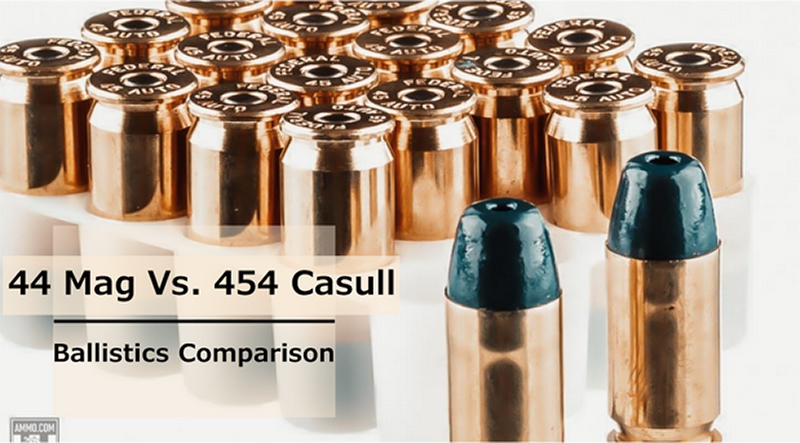
The 240-grain load from Grizzly Cartridge exits the muzzle at 1,475 feet per second, delivering 1,159 ft-lbs. of muzzle energy. The 260-grain WFNGC load achieves a muzzle velocity of 1,450 feet per second, generating 1,214 ft-lbs. of muzzle energy.
Undoubtedly, these velocities and energies are impressive! To put it into perspective, let's compare them to a 9mm. While the average 9mm bullet may have a similar muzzle velocity, it only produces muzzle energies ranging from approximately 300 to 400 ft-lbs. Let's focus on the .454 Casull and compare two potent loads from Grizzly Cartridge.
The first load is a 265-grain WFNGC, traveling at 1,700 feet per second at the muzzle. This bullet is heavier than the heaviest .44 Magnum bullet mentioned earlier, and it moves nearly 500 feet per second faster! Its muzzle energy is an astounding 1,701 ft-lbs.
To further emphasize its power, let's compare it to a well-known caliber, the .223 Remington. A 60-grain bullet fired from a .223 rifle generates only 1,281 ft-lbs. of energy, which is over 400 ft-lbs. less than the .454 Casull fired from a handgun barrel length! But that's not all—let's explore an even heavier .454 Casull loading.
Grizzly Cartridge offers a 335-grain Wide Long Nose Gas Check (WLNGC) bullet that blazes from the muzzle at an impressive 1,600 feet per second. This velocity is remarkably high for a handgun bullet, especially considering its weight. At such speed, this bullet produces over 1,900 ft-lbs. of muzzle energy, surpassing the muzzle energy of many standard-velocity, 1-ounce shotgun slugs (1,772 ft-lbs.).
It is difficult to overstate the remarkable kinetic energy this revolver bullet possesses. With such power, this hard-cast bullet would penetrate through any game animal on Earth.
Both cartridges would be suitable for bear defense, with the .44 Magnum providing enough power to take down any game in North America. On the other hand, the .454 Casull can hunt any game on the planet. However, there are other factors to consider when selecting between these two powerhouse handgun cartridges.
44 Mag Vs. 454 Casull: Performance
The performance characteristics of the .44 Magnum and .454 Casull highlight their significant power and stopping power. The .454 Casual generally outperforms the .44 Magnum in terms of muzzle velocity, energy, and bullet weight, resulting in enhanced terminals.
However, it is important to note that these characteristics can vary depending on the specific loads and firearms used. Recoil is also a notable factor, with both cartridges producing considerable recoil, making proper technique and grip crucial for accurate shooting.
44 Magnum vs. 454 Casull: Stopping Power
The power and stopping power of the .44 Magnum and .454 Casull cartridges are based on muzzle energy.
The muzzle energy of a cartridge is a useful metric for comparing the potential stopping power of different rounds. It represents the amount of energy transferred to the target upon impact and can indicate the cartridge's effectiveness.
In terms of muzzle energy, the .44 Magnum typically ranges from about 740 ft-lbs to over 1,500 ft-lbs, depending on the specific load. This wide range allows for versatility, as shooters can select loads that suit their intended purpose, whether it's for moderate recoil or maximum power. The higher-end loads of the .44 Magnum can deliver significant stopping power, making it a formidable cartridge.
On the other hand, the .454 Casull outperforms most pistol calibers, including the .44 Magnum, in terms of raw muzzle energy. The .454 Casull typically ranges from around 1,700 ft-lbs to nearly 2,000 ft-lbs of muzzle energy. This exceptional energy level translates into impressive stopping power and deep penetration, making the .454 Casull an excellent choice for hunting large and dangerous game or for situations requiring maximum stopping power.
When comparing the two cartridges based on muzzle energy alone, the .454 Casull clearly demonstrates its superiority over the .44 Magnum.
44 Magnum vs. 454 Casull: Recoil and shootability
Recoil is a significant factor to consider when comparing the 44 Magnum and 454 Casull. Firing rounds with shotgun-slug-like power from a handgun results in considerable recoil. Experienced shooters can often manage recoil through practice and familiarity. However, heavy recoil can be challenging for some shooters and may cause them to flinch, leading to poorly-placed shots. This is unacceptable in hunting scenarios and can be life-threatening in bear-defense situations. Additionally, recoil of this magnitude can significantly slow down follow-up shots.
The laws of physics determine felt recoil. A heavier bullet propelled at a higher muzzle velocity will generate more recoil. The 454 Casull produces substantially more recoil than the 44 Magnum, but whether the added recoil is worth it depends on your specific needs. If you don't require the power of the 454 Casull, dealing with the extra recoil may be optional.
Other factors should also be taken into consideration. The shooter's experience can make a notable difference. A more experienced shooter may be able to handle greater recoil, assuming all other factors are equal. However, a highly skilled shooter with conditions like carpal tunnel or arthritis may struggle with heavy recoil. The weight of the gun can also affect recoil. The 44 Magnum is the better choice if you require a lightweight revolver. Additionally, grips can influence how recoil is perceived and managed, and a simple grip swap may make a significant difference.
44 Magnum vs. 454 Casull: Velocity
When comparing velocities, it's important to note that the speeds of any cartridge can vary significantly. Therefore, presenting them as a range is more appropriate.
Typically, .44 Magnum rounds have muzzle velocities ranging from approximately 1,180 to 1,500 feet per second. This places them at the high end of pistol calibers and even competes in velocity with some rifle cartridges. This is why many people find success hunting with .44 Magnum rounds fired from lever-action rifles.
| Caliber | Velocity (fps) | Energy (ft-lb) |
| .44 Remington Magnum | 1320 | 900 |
| .454 Casull | 1600 | 1700 |
The .454 Casull takes up a notch, with muzzle velocities ranging from 1,400 to 1,900 feet per second. Once again, this competes with the velocities of rifle cartridges.
While there is some overlap between the two calibers, the .454 Casull generally edges ahead in terms of velocity. However, it's worth noting that both of these calibers are exceptionally fast-moving pistol rounds. They both benefit from being fired from long-barreled revolvers or lever-action rifles. The high velocities result in relatively flat trajectories at extended ranges when compared to other pistol calibers.
Both the .44 Magnum and .454 Casull offer impressive velocities, but the latter tends to have a slight advantage in terms of speed.
44 Magnum vs. 454 Casull: Range
Discussing the effective range of these cartridges is subjective, similar to the concept of stopping power. Skilled shooters can achieve hits well beyond 100 yards with both the 44 Magnum and 454 Casull, making them popular choices among long-distance pistol shooters. Whether you're aiming to punch holes in paper targets or ring steel gongs at impressive distances, either cartridge will more than meet the requirements.
However, when it comes to ethically killing game animals at a given distance, the .454 Casull has the advantage due to its higher muzzle energy and velocity. These factors contribute to better impact on targets and flatter trajectories.
Nevertheless, it is worth considering how the added recoil of the .454 Casull compared to the .44 Magnum affects accuracy. Most shooters experience some level of flinch during initial training, but with practice, they can overcome it. The .454 Casull, unlike many other pistol calibers, generates significant recoil. Consequently, even experienced shooters are likely to experience a noticeable flinch when firing this large caliber.
Both cartridges offer exceptional accuracy, and the limiting factor in terms of range is likely to be shooter flinch and fatigue.
Ammunition availability and cost
When it comes to ammunition availability and cost, there are some important considerations. As of 2023, both the .44 Magnum and .454 Casull cartridges remain relatively expensive. On average, .44 Magnum ammunition costs around a dollar per round, while .454 Casull ammunition tends to be priced at $1.50 per round or higher. These prices are comparable to rifle rounds, reflecting the amount of brass, powder, and lead required to manufacture these cartridges.
In addition to ammunition costs, the firearms chambered in these calibers can also be expensive. Using firearms can provide more affordable options, but a Smith & Wesson revolver chambered in .44 Magnum can still cost around $500. Firearm options for the .454 Casull are even pricier, with the most affordable choices starting at around $800. Finding used firearms chambered in .454 Casull can be challenging at best.
Wrap Up
Both the .44 Magnum and .454 Casull have roots in hunting revolvers from the 1950s. While the .44 Magnum achieved greater commercial success, the .454 Casull is considered a superior range and stopping power performer, assuming one can handle the recoil.
Although our personal experience with the .454 Casull is limited, it is anticipated that this cartridge will continue to gain popularity in the commercial market. Over the past decade, there has been a renewed interest in long-range and powerful handgun cartridges, contributing to their growing appeal.

